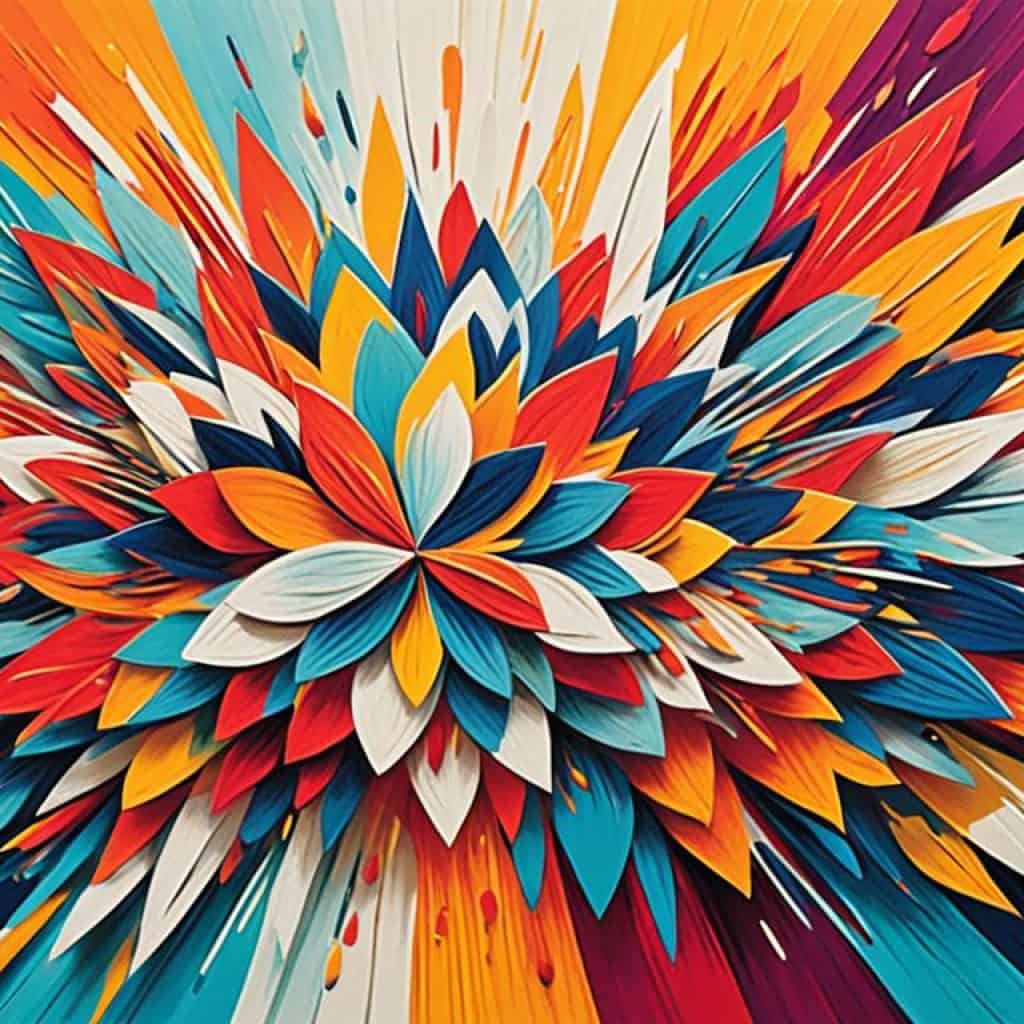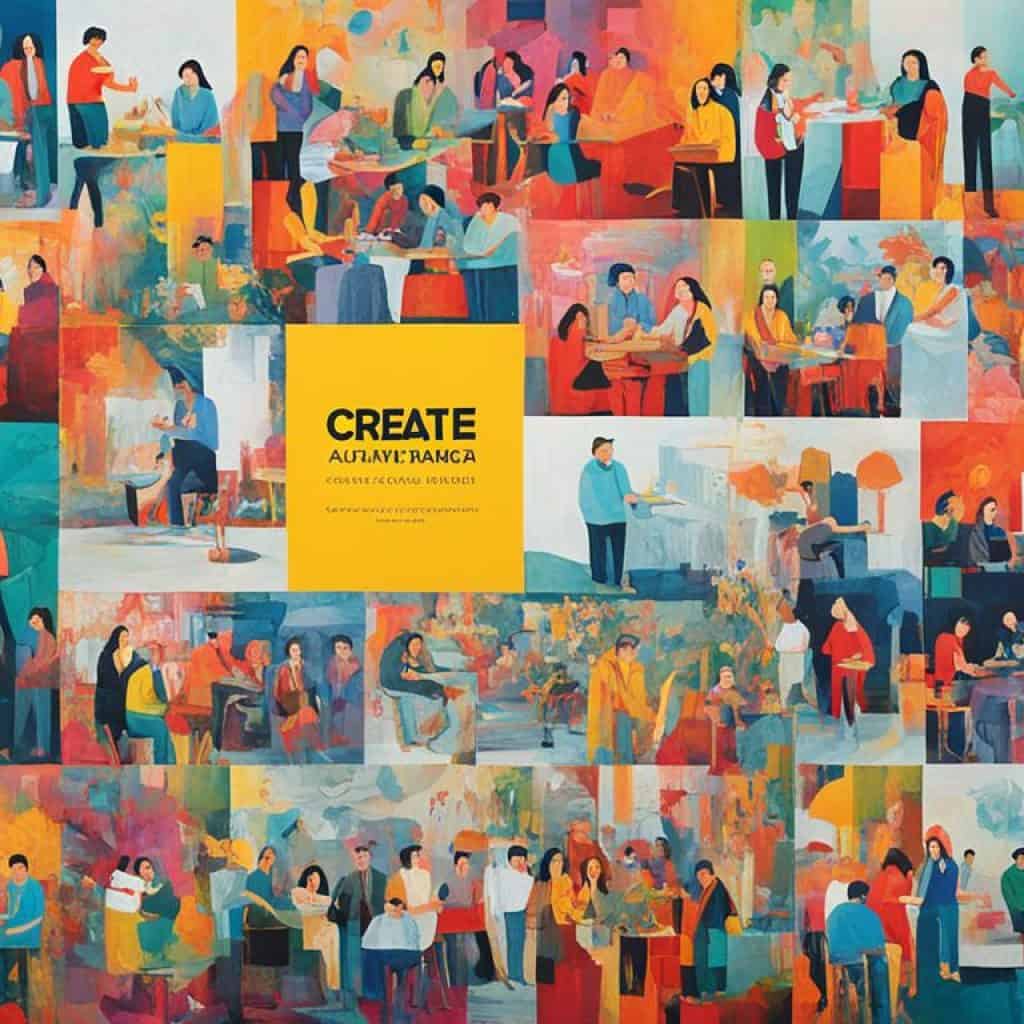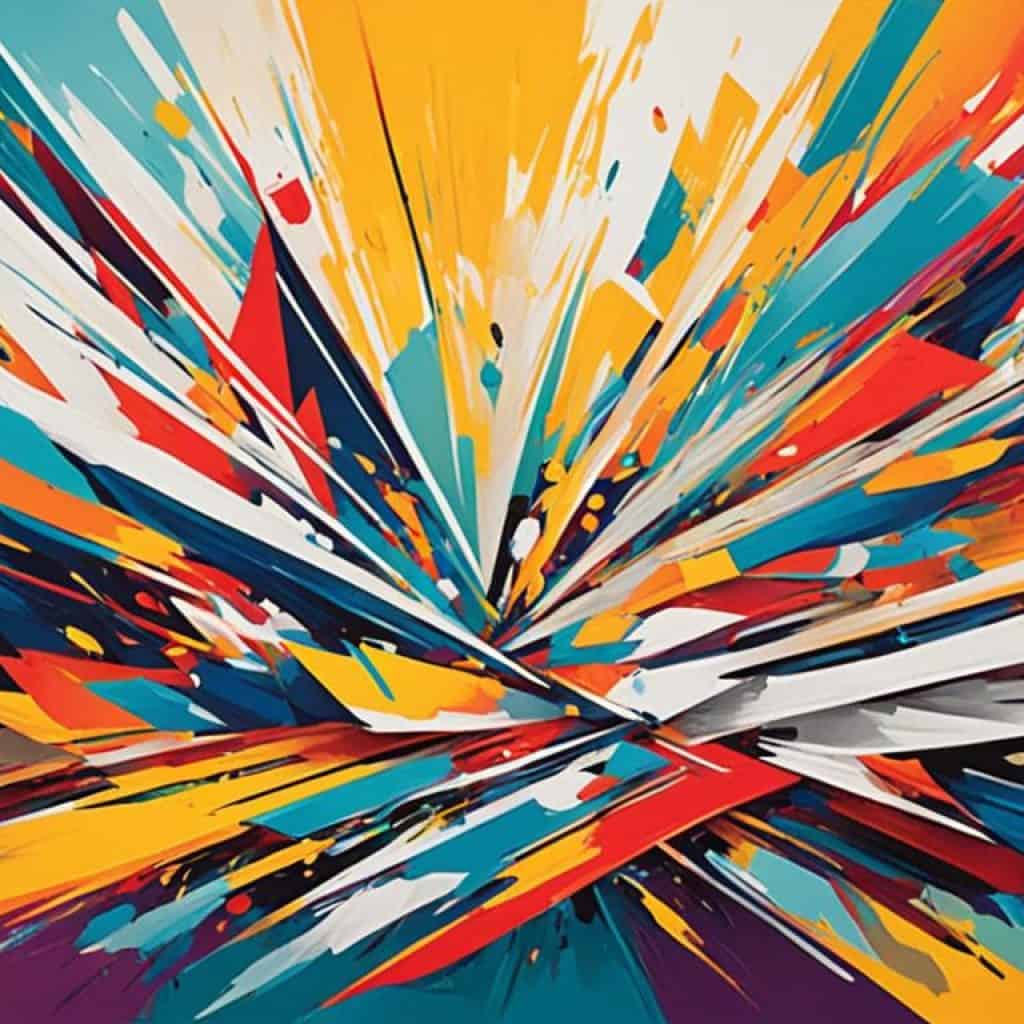Are you ready to dive into the vibrant world of beginner-friendly contemporary arts in the Philippines? Prepare to be amazed as we uncover the fusion of modern art techniques and traditional Filipino art forms that make up the dynamic Philippine art scene. From easy art tutorials to exploring emerging Filipino artists, this article is your guide to unlock the wonders of contemporary art in the Philippines.
Key Takeaways:
- Discover the diversity of contemporary art styles in the Philippines.
- Get inspired by easy art projects perfect for beginners.
- Explore traditional Filipino art forms and their influence on modern art.
- Learn about emerging Filipino artists shaping the Philippine art scene.
- Uncover the vibrant and ever-evolving world of Philippine contemporary art.
Overview of Philippine Contemporary Art
Philippine contemporary art is a captivating fusion of the old and new, seamlessly blending traditional Filipino aesthetics with modern techniques and themes. It encompasses a diverse and dynamic art scene that reflects the country’s rich cultural tapestry.
Contemporary artists in the Philippines utilize their creations as a powerful platform for social commentary, addressing pressing societal issues such as politics, corruption, and human rights. Through their artwork, they provoke thought and spark important conversations, shedding light on the complexities of the Filipino experience.
One of the defining characteristics of Philippine contemporary art is its ability to challenge boundaries and conventions. Artists experiment with various mediums, exploring innovative ways to express their ideas and narratives. This constant push for innovation and creativity makes the art scene in the Philippines an exciting and ever-evolving landscape.
With its fusion of old and new, Philippine contemporary art offers a unique glimpse into the country’s rich heritage while providing a lens to examine its present realities. Artists incorporate traditional Filipino art forms, such as painting, sculpture, and textile, into their contemporary works, paying homage to their cultural roots.

This image showcases the vibrant and dynamic nature of Philippine contemporary art, capturing the essence of its fusion between tradition and innovation.
By exploring the diverse and dynamic art scene in the Philippines, art enthusiasts and admirers have the opportunity to delve into thought-provoking works that reflect social issues and celebrate cultural heritage. The fusion of old and new, the social commentary, and the diverse themes make the Philippine contemporary art scene truly remarkable and worth exploring.
Notable Philippine Contemporary Artists
The Philippine contemporary art scene is enriched by the contributions of several notable artists who have left a lasting impact on the creative landscape. These artists demonstrate the diversity and vibrancy of contemporary art in the Philippines, showcasing unique perspectives and innovative approaches to artistic expression.
Benedicto Cabrera
Benedicto Cabrera, widely known as Bencab, is a national artist who has dedicated his career to exploring the essence of Filipino life through art. His captivating works capture the beauty and complexity of the Filipino experience, using various mediums to depict scenes from everyday life, portraits, and landscapes.
Nona Garcia
Nona Garcia’s photorealistic paintings provoke contemplation and introspection. Through her meticulous attention to detail, Garcia raises questions about memory, identity, and the intangible nature of human experience. Her works often invite viewers to reflect on their own perceptions and memories.
Elmer Borlongan
Elmer Borlongan’s realistic portrayals capture the raw emotions and struggles faced by the common man. His powerful artworks depict scenes of daily life, showcasing the resilience, hardships, and joys of ordinary Filipinos. Borlongan’s artistic style, combined with his poignant storytelling, creates a deep connection between the audience and his subjects.
Patricia Perez Eustaquio
Patricia Perez Eustaquio’s interdisciplinary approach merges different art forms such as painting, sculpture, and installation to explore themes of decay, desire, and beauty. Her thought-provoking works challenge traditional notions of aesthetics and evoke a sense of contemplation, inviting viewers to question societal ideals and cultural norms.
These notable Philippine contemporary artists exemplify the richness and diversity of the country’s art scene. Through their unique artistic visions and profound explorations of Filipino culture and society, they continue to shape and inspire the future generations of artists in the Philippines.

Notable Philippine Contemporary Artists
| Artist | Artistic Style/Theme |
|---|---|
| Benedicto Cabrera (Bencab) | Exploration of Filipino life |
| Nona Garcia | Photorealism, memory, and identity |
| Elmer Borlongan | Realistic portrayals of everyday life |
| Patricia Perez Eustaquio | Interdisciplinary approach exploring decay, desire, and beauty |
Prominent Art Movements in the Philippines
The Philippine contemporary art scene has been greatly influenced by several prominent art movements that have shaped its diverse and ever-evolving landscape. These movements have played a significant role in the development and exploration of various artistic styles and concepts.
Modernism
One of the prominent art movements in the Philippines is Modernism, which emerged in the mid-20th century. Modernism introduced new artistic approaches such as abstraction and expressionism, challenging traditional artistic conventions. Through Modernism, Filipino artists began to experiment with innovative techniques and abstract expressions, reflecting the changing times and global artistic trends.
Neo-Realism
Another influential art movement is Neo-Realism, which focuses on portraying reality from a fresh perspective. Neo-Realism emerged as a response to the socio-political issues faced by the Philippines during the post-war era. Artists aligned with this movement aimed to depict the struggles, triumphs, and everyday lives of ordinary Filipinos, often highlighting the social disparities and political tensions of the time.
Post-Modernism
Post-Modernism is yet another significant art movement that had an impact on the Philippines. Post-Modernism challenges traditional norms and embraces diversity, creating a space for artists to explore unconventional ideas and push the boundaries of artistic expression. This movement encourages artists to question societal norms and find new ways to interpret and convey their messages through their artworks.
Conceptual Art
Conceptual Art is a movement that prioritizes ideas and concepts over the visual elements of art. It emphasizes the importance of the underlying ideas and messages conveyed by artworks, often employing unconventional mediums and techniques. Filipino artists embraced conceptual art as a means to engage viewers in thought-provoking and intellectually stimulating experiences, encouraging them to look beyond the aesthetic aspects and delve deeper into the meaning and purpose of the artwork.
The interplay of these prominent art movements has contributed to the dynamism and diversity of the Philippine contemporary art scene, reflecting the country’s rich cultural heritage and socio-political landscape.
| Art Movement | Description |
|---|---|
| Modernism | Introduces abstraction and expressionism, challenging traditional artistic conventions. |
| Neo-Realism | Portrays reality from a fresh perspective, reflecting the struggles and triumphs of ordinary Filipinos. |
| Post-Modernism | Challenges norms, embraces diversity, and encourages artists to question societal conventions. |
| Conceptual Art | Emphasizes ideas and concepts over visual elements, provoking intellectual engagement and introspection. |
These art movements have paved the way for artistic exploration and innovation, shaping the evolving Philippine contemporary art scene and contributing to its unique identity.

How to Appreciate Philippine Contemporary Art
Appreciating Philippine contemporary art does not require expertise. It is a process that engages your senses and personal interpretation. By taking the time to look, think, learn, and engage, you can develop a deeper appreciation for the artistic expressions found in this vibrant art scene.
Look Closely at the Artwork
When viewing Philippine contemporary art, make an effort to observe the artwork closely. Pay attention to the colors, shapes, textures, and composition. Take in the visual elements and allow them to evoke emotions and spark curiosity. Notice the details that might have been thoughtfully incorporated by the artist.
Think and Reflect
Consider what the artwork is trying to convey. Each piece of art has its own story, message, or interpretation. Reflect on your own thoughts and feelings while experiencing the artwork. Art has the power to evoke different emotions and prompt introspection. Allow yourself to be open to the artist’s intentions and meaning.
Learn About the Artist and Techniques Used
Learning about the artist behind the artwork can provide valuable insights and a deeper understanding. Research the artist’s background, influences, and artistic journey. Additionally, explore the techniques used in creating the artwork. This can include traditional Filipino art forms or contemporary art styles. Understanding the context and techniques can help you appreciate the craftsmanship and intention behind the creation.
Engage in Discussions
Engaging in conversations about art can broaden your perspectives and enhance your art appreciation experience. Share your thoughts with others and listen to their interpretations. Join art forums or attend gallery openings to connect with fellow art enthusiasts and gain new insights. Engaging in discussions widens your understanding and appreciation of Philippine contemporary art.
“Art enables us to find ourselves and lose ourselves at the same time.” – Thomas Merton
By following these steps – looking closely, thinking, learning, and engaging – you can develop a deeper appreciation and understanding of Philippine contemporary art. Let the art speak to you, evoke emotions, and inspire personal connections.
Prominent Art Galleries and Museums in the Philippines
The Philippines is a treasure trove of prominent art galleries and museums that exhibit the finest examples of local contemporary art. These cultural institutions provide a platform for established and emerging artists to showcase their artistic prowess, while also offering visitors a unique and enriching cultural experience that reflects the vibrant art scene in the country.
Metropolitan Museum of Manila
The Metropolitan Museum of Manila, affectionately known as the Met, stands tall as one of the most distinguished art institutions in the Philippines. With a commitment to promoting and preserving Philippine art and culture, the Met consistently hosts awe-inspiring exhibitions featuring the works of renowned Filipino artists. Through its vast collection and diverse range of exhibits, the Met provides art enthusiasts with an opportunity to immerse themselves in the rich tapestry of Philippine contemporary art.
Cultural Center of the Philippines (CCP)
The Cultural Center of the Philippines (CCP) is an iconic establishment that serves as a bastion of artistic expression in the Philippines. This premier institution showcases a captivating array of exhibits by both established and emerging artists, encapsulating the creativity and dynamism of the Philippine contemporary art scene. With its world-class facilities and commitment to nurturing artistic talent, the CCP plays a pivotal role in promoting and preserving the cultural heritage of the country.
Ateneo Art Gallery
The Ateneo Art Gallery, situated within the Ateneo de Manila University, boasts an impressive collection of Philippine contemporary art. This esteemed institution focuses on presenting curated exhibitions and supporting artists who are exploring innovative approaches and pushing the boundaries of artistic expression. With its dedication to fostering creativity and providing a platform for thought-provoking artworks, the Ateneo Art Gallery is a must-visit destination for art enthusiasts seeking a glimpse into the vibrant Filipino art scene.
Pinto Art Museum
The Pinto Art Museum, nestled amidst lush greenery in Antipolo City, offers visitors a serene and visually captivating environment to explore a wide range of Philippine contemporary art. Showcasing an extensive collection of artworks from different regions of the country, the museum allows visitors to immerse themselves in the country’s diverse artistic traditions. With its unique architectural design and curated exhibitions, the Pinto Art Museum provides an immersive experience that stimulates contemplation and appreciation of Philippine contemporary art.
The Metropolitan Museum of Manila, Cultural Center of the Philippines (CCP), Ateneo Art Gallery, and Pinto Art Museum are just a few examples of the prominent art galleries and museums that contribute to the thriving art scene in the Philippines. These institutions not only preserve and promote the cultural heritage of the country but also serve as significant platforms for emerging artists to gain recognition and share their artistic visions with the world.
Impact of Philippine Contemporary Art in Society
Philippine contemporary art plays a vital role in shaping society and addressing pressing social issues. Through their artistic expressions, Filipino artists have the power to reflect on societal challenges and ignite meaningful conversations. Their thought-provoking artworks encourage critical thinking and offer diverse perspectives, promoting a deeper understanding of complex social realities.
One of the remarkable aspects of Philippine contemporary art is its ability to preserve and promote cultural heritage. Artists often incorporate traditional Filipino art forms into their contemporary pieces, honoring their rich legacy and keeping cultural traditions alive. This fusion of old and new creates a unique artistic language that celebrates the country’s identity and fosters a sense of pride among Filipinos.
The impact of Philippine contemporary art extends beyond the realm of creativity. The art industry contributes significantly to the country’s economy, generating revenue through artwork sales, admission fees to galleries and museums, and art tourism. Galleries and museums showcasing contemporary Filipino art attract both local and international visitors, stimulating tourism and supporting local businesses.
“Art is not just a reflection of society, but a catalyst for change.”
Through their creativity and artistic prowess, Filipino artists have the power to evoke emotions, challenge existing narratives, and inspire positive social transformation. By shedding light on social issues, promoting critical thinking, showcasing cultural heritage, and contributing to the economy, Philippine contemporary art continues to shape society and ignite a deeper appreciation for the arts.
Future of Philippine Contemporary Art
The future of Philippine contemporary art is filled with exciting possibilities and endless potential. As technology continues to advance, artists in the Philippines are embracing the world of digital art, exploring new mediums, and pushing the boundaries of traditional artistic techniques. This integration of digital art allows for greater experimentation and opens up a whole new realm of artistic expression.
With the rise of sustainability movements worldwide, there is also an increasing focus on sustainable art practices within the Philippine contemporary art scene. Artists are finding innovative ways to create art using eco-friendly materials, repurposing objects, and promoting environmental awareness through their work. By incorporating sustainability into their artistic processes, these artists are not only creating visually stunning pieces but also contributing to a greener and more conscious art community.
Furthermore, the Philippine contemporary art scene is gaining global recognition, with more artists from the Philippines making their mark internationally. Through their unique perspectives and powerful storytelling, these artists are reshaping the global art narrative and bringing attention to the rich cultural heritage of the Philippines. The global recognition of Philippine contemporary art opens doors for collaborations, exhibitions, and representation on an international scale, further propelling the growth of the Philippine art scene.
As we look to the future, we can expect continued innovation and growth in the Philippine contemporary art scene, driven by the exploration of digital art, an emphasis on sustainability, and the global recognition of Filipino artists. The fusion of traditional Filipino aesthetics with modern techniques will continue to captivate audiences, ignite conversations, and push the boundaries of artistic expression. The future of Philippine contemporary art is vibrant, dynamic, and full of boundless creativity.
Growth Factors in the Future of Philippine Contemporary Art
| Growth Factors | Description |
|---|---|
| Embracing Digital Art | Artists exploring digital mediums and techniques to push artistic boundaries. |
| Sustainability | Artists adopting eco-friendly practices and using sustainable materials in their artwork. |
| Global Recognition | Increased acknowledgement and representation of Filipino artists on the international stage. |
Conclusion
The Philippine contemporary art scene is a vibrant and diverse landscape that offers a wealth of opportunities for both artists and art enthusiasts. By combining traditional Filipino aesthetics with modern techniques, artists create thought-provoking works that reflect societal issues and preserve cultural heritage. For beginners, exploring the world of contemporary arts in the Philippines is a gateway to appreciating art, understanding different art movements, and discovering emerging talents.
Engaging with beginner-friendly contemporary arts allows individuals to unlock their creativity and embark on a journey of cultural exploration. By immersing themselves in the unique fusion of old and new, beginners can learn to appreciate the intricate details of art and the stories it tells. From exploring modern art techniques to discovering traditional Filipino art forms, there is no shortage of inspiration in the Philippine art scene.
As beginners delve into the world of contemporary arts in the Philippines, they will find themselves captivated by the diverse range of artists and styles. The emerging talents in the Philippine art scene are pushing boundaries and making their mark locally and internationally. By supporting and understanding these emerging artists, beginners can contribute to the growth and recognition of the Philippine contemporary art scene.
Don’t hesitate to unlock the vibrant world of beginner-friendly contemporary arts in the Philippines. Embrace the opportunity to appreciate art, learn about different art movements, and discover emerging talents. With its rich cultural tapestry and ever-evolving artistic landscape, the Philippine contemporary art scene is waiting to be explored and celebrated.














Add comment